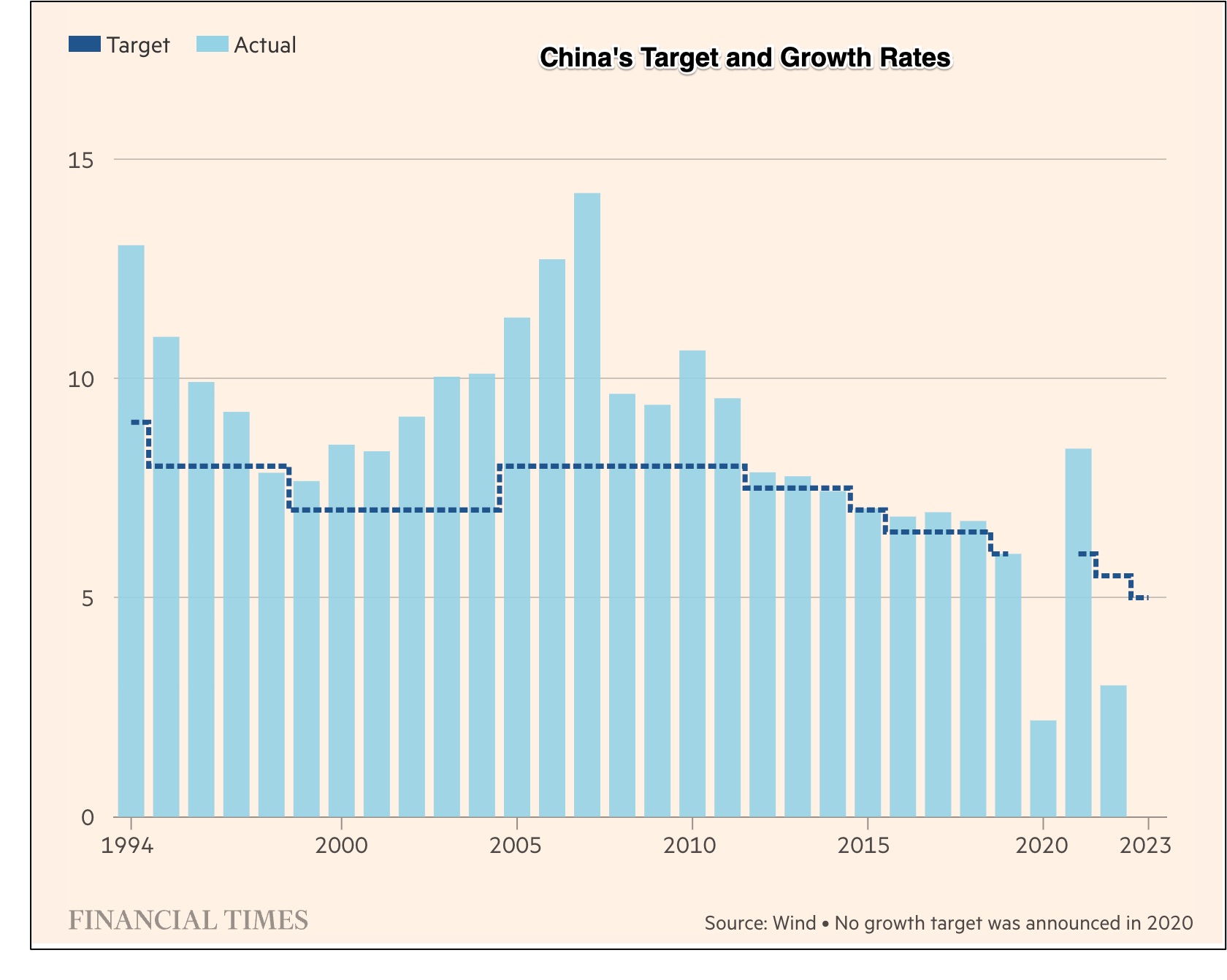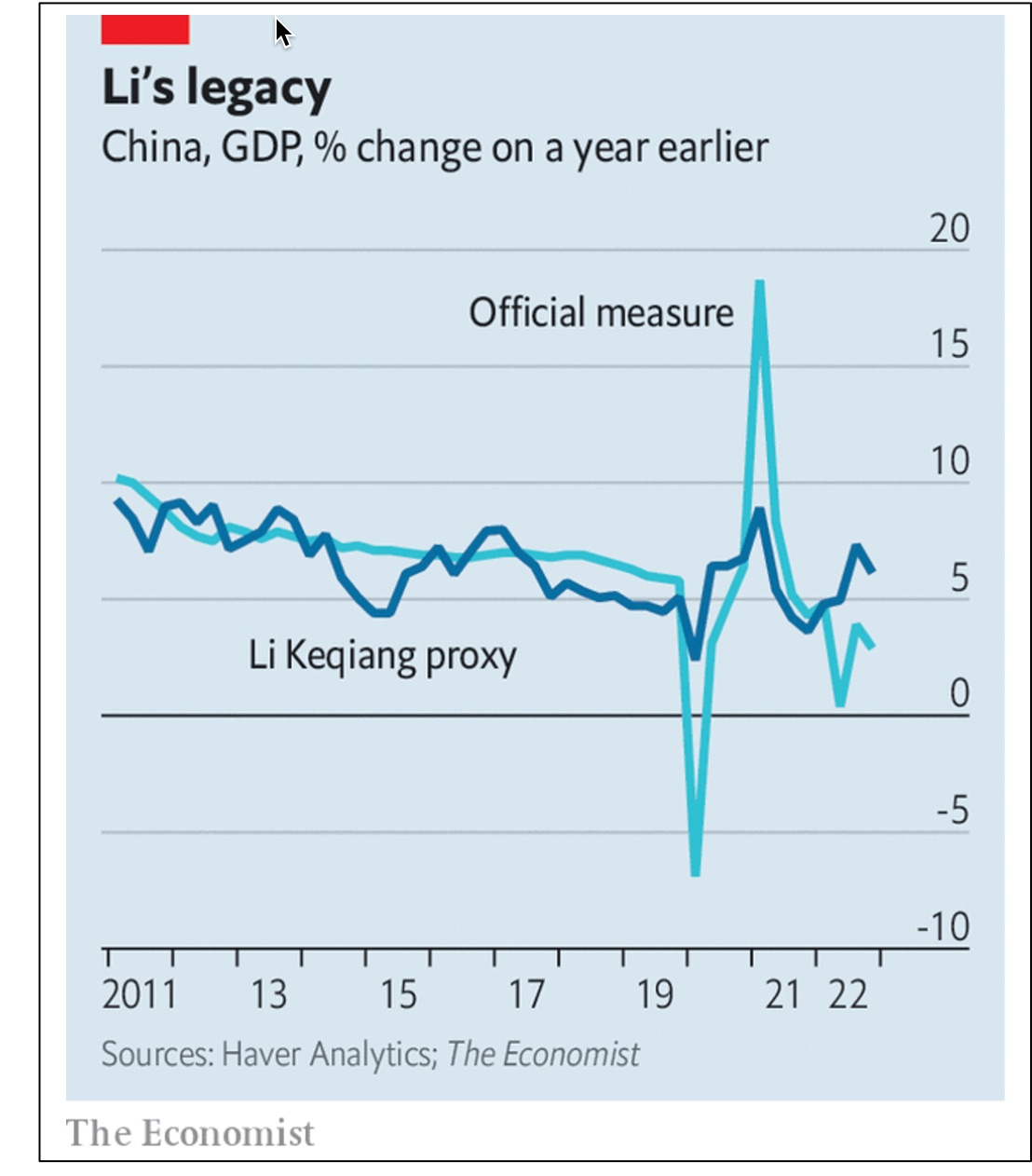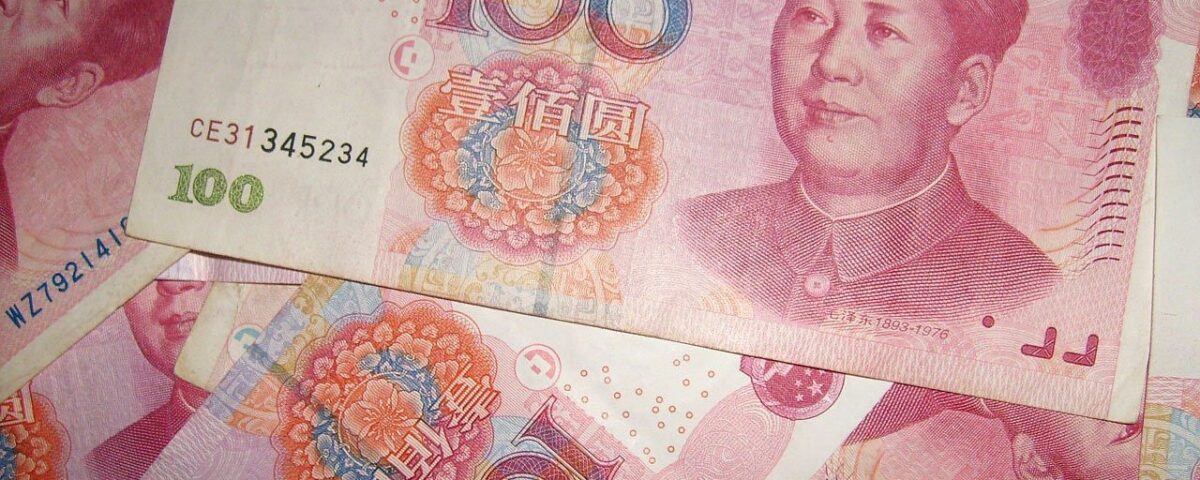
Why Household Production Needs a Price
March 9, 2023
March 2023 Friday’s e-links: What a Sheriff Says
March 10, 2023Probably closer to 3 percent rather then 5.5 percent, China’s 2022 growth rate was less than they expected. Now, its National People’s Congress said the projection for 2023 was 5 percent. As for inflation, the goal is 3 percent and unemployment, 5.5 percent:

China’s Growth Rate
We began today’s post with the word probably. because no one is sure of China’s statistics.
Characterizing the Chinese economy, the Financial Times tells us that so “gloomy” a 2023 projection ensures that they can meet it. Their challenges include descending property sales, falling exports, and a climb from the Covid contraction. Their hope is that the consumer will buy more.
However, the numbers that come out of China are not necessarily real. In the past, we’ve defaulted to the “Li Keqiang Index.” At the time a local party secretary, Mr. Li (who rose to became Premier) said his provence’s statistics were “unreliable.” Instead, his alternative was a bundle of bank lending, electricity consumption, and rail cargo figures. Since then, economists have suggested weighting loans at 60 percent, electricity, 30 percent, and rail cargo, 10 percent:

Recently though, the pandemic’s slowdown in retail, real estate, and air travel created new questions. Different from the Li Keqiang variables, last year’s slowdown was unprecented. Some say that satellite images have some answers. But, comparisons are tough because newer satellites are more accurate than what they looked at in the past. Furthermore, the newer numbers have to account for a much larger services sector.
In the articles I read, we are left wondering. They question what China will report but provide no substitute.
Our Bottom Line: GDP Accuracy
When we look at GDP numbers, they seem rather precise. We can get a total for the value of goods and services produced to get the GDP for a single year and then compare two years for a growth rate.
Statistics, though, are rarely that simple.
We have to decide what to count. In 1987, Italy pushed its GDP up 18 percent and became the fifth largest economy in the world by including “off-the-books” transactions. Somewhat similarly, in 2014, Nigeria ballooned its GDP by 60 percent when it added new economic activity. Called “rebasing,” in 2021, they expected the figures to again change because 2018/2019 became their new base year.
Countries also might not be able to gather the statistics. Visiting the Zambian Central Statistical Office in Lusaka, economist Morten Jerven learned that their staff was composed of three people. One person in the office pulled together cement purchases to estimate national construction. Meanwhile, the value of agricultural production was based on crop forecasts for 8 crops and growth rates were taken from past numbers. The result, though, was one precise GDP number.
Finally, we have the bigger debate about whether any GDP number can be accurate. Because it ignores positive and negative externalities that include happiness, education and resource depletion, and free services like Facebook and Twitter, the GDP data base has been challenged.
So yes, China’s macroeconomic numbers could be especially inaccurate. But, in varying degrees, others are too.
My sources and more: Because the statistics shared by the Chinese government have always concerned me, I welcomed this Economist article. From there, we looked back at econlife,here and here and then ahead through this excellent discussion from FT.
![econlifelogotrademarkedwebsitelogo[1]](/wp-content/uploads/2024/05/econlifelogotrademarkedwebsitelogo1.png#100878)




